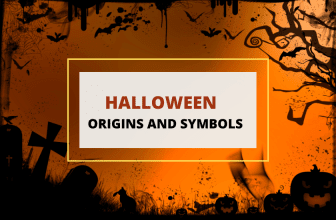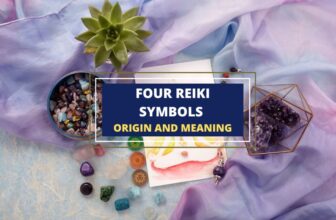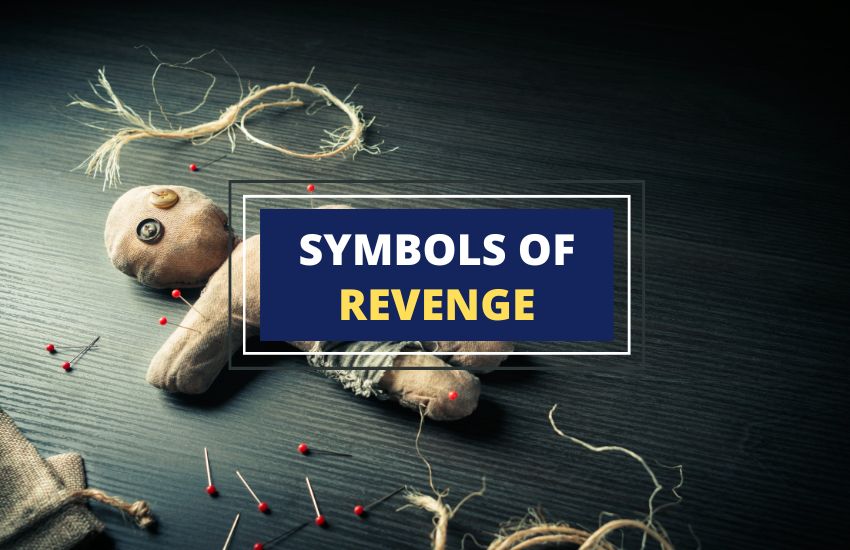
Table of Contents
Are you feeling wronged and seeking to unleash your fury upon those who have crossed you? Revenge is a dish best-served cold, they say, but sometimes it helps to have some powerful symbols at your disposal to really drive the point home.
From the classic black candle to the lesser-known red poppy, symbols of revenge have been used for centuries to convey a sense of power, danger, and vengeance. Whether you’re a fan of voodoo dolls, tarot cards, or cursed objects, there’s a symbol out there that’s perfect for expressing your anger and striking fear into the hearts of your enemies.
So, buckle up and get ready to explore the dark and fascinating world of symbols of revenge – but be warned, once you start down this path, there’s no turning back!
1. Black Candle

The black candle has been used as a symbol of revenge for centuries, its dark color representing the shadowy nature of vengeance. It’s said to possess a powerful energy that can be harnessed to bring harm to those who have wronged you.
Burning a black candle is said to create negative energy that can be directed toward a specific person or group, amplifying the strength of your intention to seek revenge.
The black candle is often used in conjunction with other symbols of revenge, such as voodoo dolls or hexes, to increase the potency of your spell. It’s also said to be effective in rituals designed to break curses or hexes that have been placed upon you, allowing you to take back control and seek your own revenge.
2. Voodoo Doll
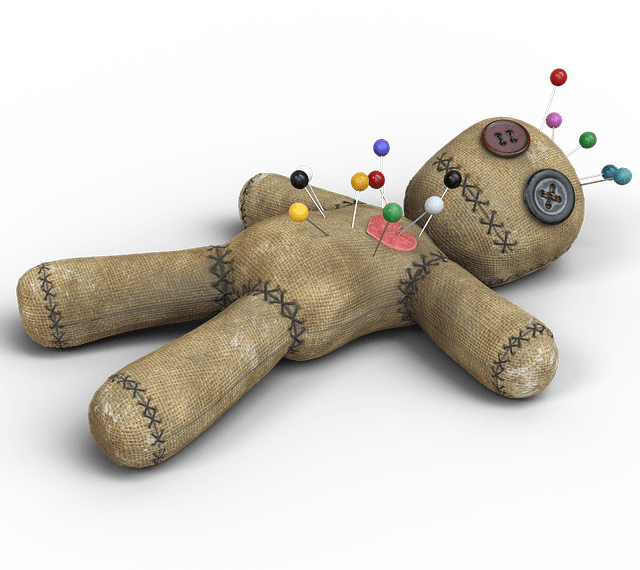
It’s believed that by creating a doll in the image of a person and inflicting harm upon it, the intended target will suffer the same physical or emotional pain.
To use a voodoo doll for revenge, one must first create or acquire a doll that closely resembles the target. The doll is adorned with personal items or hair from the target, and a spell or curse is placed upon it. The doll is then used to inflict harm, either by sticking pins into specific areas or by using other methods to cause physical or emotional pain.
While the use of a voodoo doll may seem like a harmless way to seek revenge, it’s important to remember that it can have serious consequences. It’s believed that using such a powerful symbol of revenge can lead to negative karma and can also cause harm to innocent people who may be caught in the crossfire.
3. Scorpion

The scorpion represents a dangerous and vengeful creature that strikes out at those who have wronged it. In ancient Egyptian mythology, the scorpion was associated with the goddess Serket, who was said to protect the dead and punish their enemies.
In some cultures, the scorpion is also associated with the idea of karma, or the concept that one’s actions will eventually come back to them. The sting of a scorpion is a reminder you’re your negative actions will inevitably lead to negative consequences.
In modern culture, the scorpion is often used as a symbol of strength, determination, and revenge. It’s commonly depicted in tattoos, jewelry, and other forms of art as a reminder to stay strong and seek justice against those who have wronged you.
4. Dagger

The dagger has long been associated with revenge and vengeance, its sharp and deadly blade representing the desire to strike back against your enemies. It’s usually seen as a weapon of last resort, to be used only when all other options have failed.
The use of the dagger as a symbol of revenge is associated with themes of honor and justice, as it’s seen as a way to protect one’s own honor and seek justice against those who have acted unjustly. It’s also often depicted as a tool of the underdog, used by those who are outnumbered or outmatched in a fight.
In modern culture, the dagger remains a popular symbol of revenge and power, commonly used in tattoos and other forms of art to represent strength and determination in the face of adversity.
5. Skull

The skull is a powerful symbol of revenge, representing the idea of death and mortality, and reminding us that we’re all ultimately accountable for our actions. It’s also associated with vengeance and retribution, serving as a warning to those who would act unjustly.
The skull is also often used in fashion and art to represent rebellion and anti-authoritarianism, as well as to evoke a sense of danger and unpredictability. It’s commonly seen depicted in tattoos, clothing, and other forms of art as a symbol of strength and resilience in the face of adversity.
6. Snake

The snake has been a symbol of revenge for centuries, its venomous bite and cunning nature making it an apt representation for those seeking to exact revenge on their enemies. The snake’s ability to slither and hide in plain sight, waiting for the right moment to strike, is seen as a metaphor for the way in which revenge can be carried out.
In Greek mythology, Medusa was transformed into a monster with serpents for hair and venomous fangs, as punishment for her supposed transgressions. In Hindu mythology, Nagas were powerful serpent deities associated with revenge and protection.
The snake’s association with revenge has also been seen in popular culture. For example, in the Harry Potter series, Nagini is a giant snake who serves as a loyal servant and companion to the evil Lord Voldemort.
7. Cursed Objects
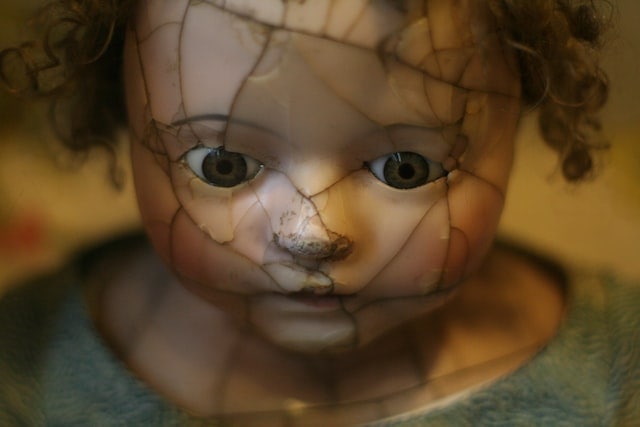
Cursed objects are believed to be imbued with negative energy, and those who possess them may suffer from bad luck, misfortune, or even physical harm.
In folklore, cursed objects are often linked to tragic events or dark magic. For example, cursed mirrors are said to reflect the souls of those who have died, while cursed dolls are believed to be possessed by vengeful spirits.
In some cultures, objects such as cursed daggers or swords are believed to carry the spirit of their previous owners, seeking revenge on those who have done them wrong.
In popular culture, cursed objects are frequently used as plot device in horror movies and books. For example, the cursed videotape in the movie “The Ring” brings death to those who watch it, while the cursed puzzle box in “Hellraiser” unleashes demonic beings when solved.
Cursed objects serve as a powerful symbol of revenge, representing the idea that negative energy can linger and seek retribution on those who have wronged others.
8. Broken Mirror
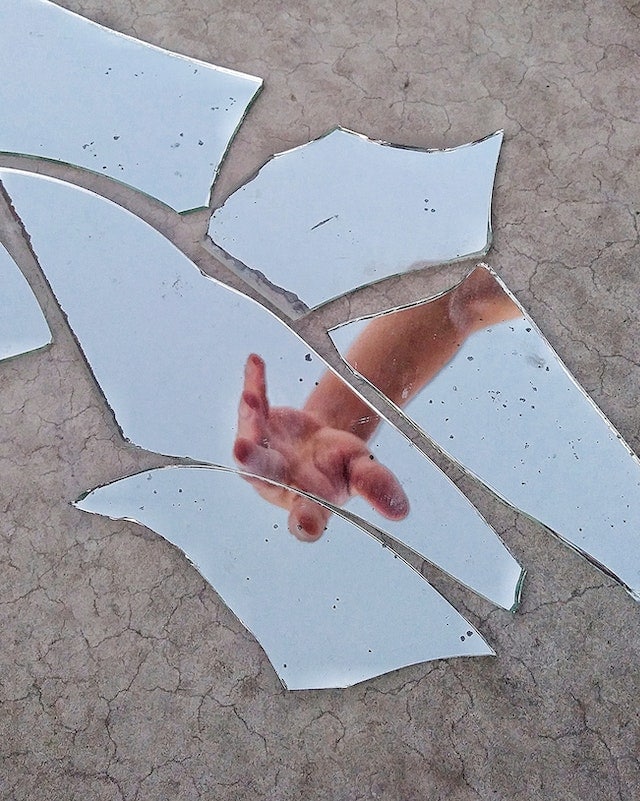
In folklore and superstition, breaking a mirror is said to bring seven years of bad luck, and many believe that the broken fragments of the mirror can trap the reflection of the person who broke it, leaving them vulnerable to the vengeful spirits that are believed to be associated with the mirror.
The broken mirror is also often used as a metaphor for shattered relationships, with the fragmented pieces representing the irreparable damage done to a once harmonious bond.
In this way, the broken mirror symbolizes the desire for revenge, as those who have been wronged seek to inflict harm on those who have caused the fracture in the relationship.
Today, the broken mirror is frequently used as a plot device in horror movies and books. For example, in the movie “Candyman,” the titular character is summoned by repeating his name five times in front of a broken mirror.
9. Raven
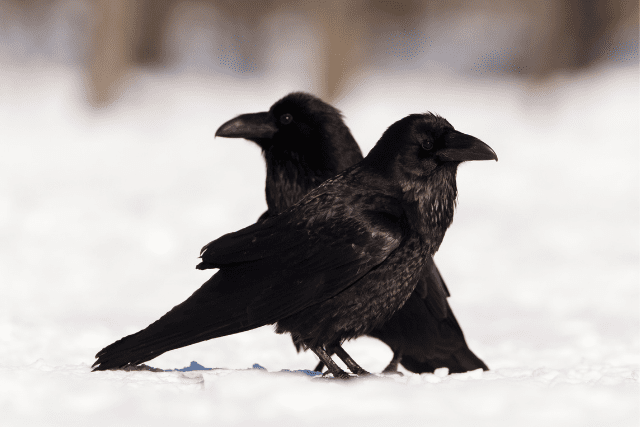
In Norse mythology, the powerful god Odin had two ravens named Huginn and Muninn, who would fly around the world to gather information for him. In this context, the raven represents the idea of seeking out knowledge in order to exact revenge.
In Native American culture, the raven is often associated with trickery and revenge. This bird is also seen as a shape-shifting trickster who uses his cunning and intelligence to get revenge on those who have wronged him.
Even today, the raven continues to be used as a symbol of revenge, especially in popular culture. In Edgar Allan Poe’s famous poem “The Raven,” the titular bird serves as a haunting reminder of the protagonist’s lost love, driving him to the brink of madness.
Overall, the raven symbolizes the idea of seeking revenge through intelligence, cunning, and persistence. Its dark and mysterious nature has made it a powerful representation of the desire to retaliate against those who have wronged us.
10. Spider

The spider’s ability to weave intricate webs and its venomous bite has made it an apt representation of the idea of seeking vengeance.
In African folklore, the spider Anansi is known for his cunning and trickery, using his intelligence and webs to outsmart his enemies and seek revenge. In some Native American cultures, spiders are associated with female revenge, with the venomous bite representing the idea of striking back against those who have wronged them.
In the modern world, spiders are often used as a symbol of revenge. For example, in the Spider-Man comics and movies, the character seeks revenge against those who killed his uncle and caused him personal harm.
The spider symbolizes the idea of seeking revenge through patience, intelligence, and stealth. Its ability to weave intricate webs and its venomous bite represents the potential for harm and the desire to retaliate against those who have caused harm to us.
11. Red Poppy
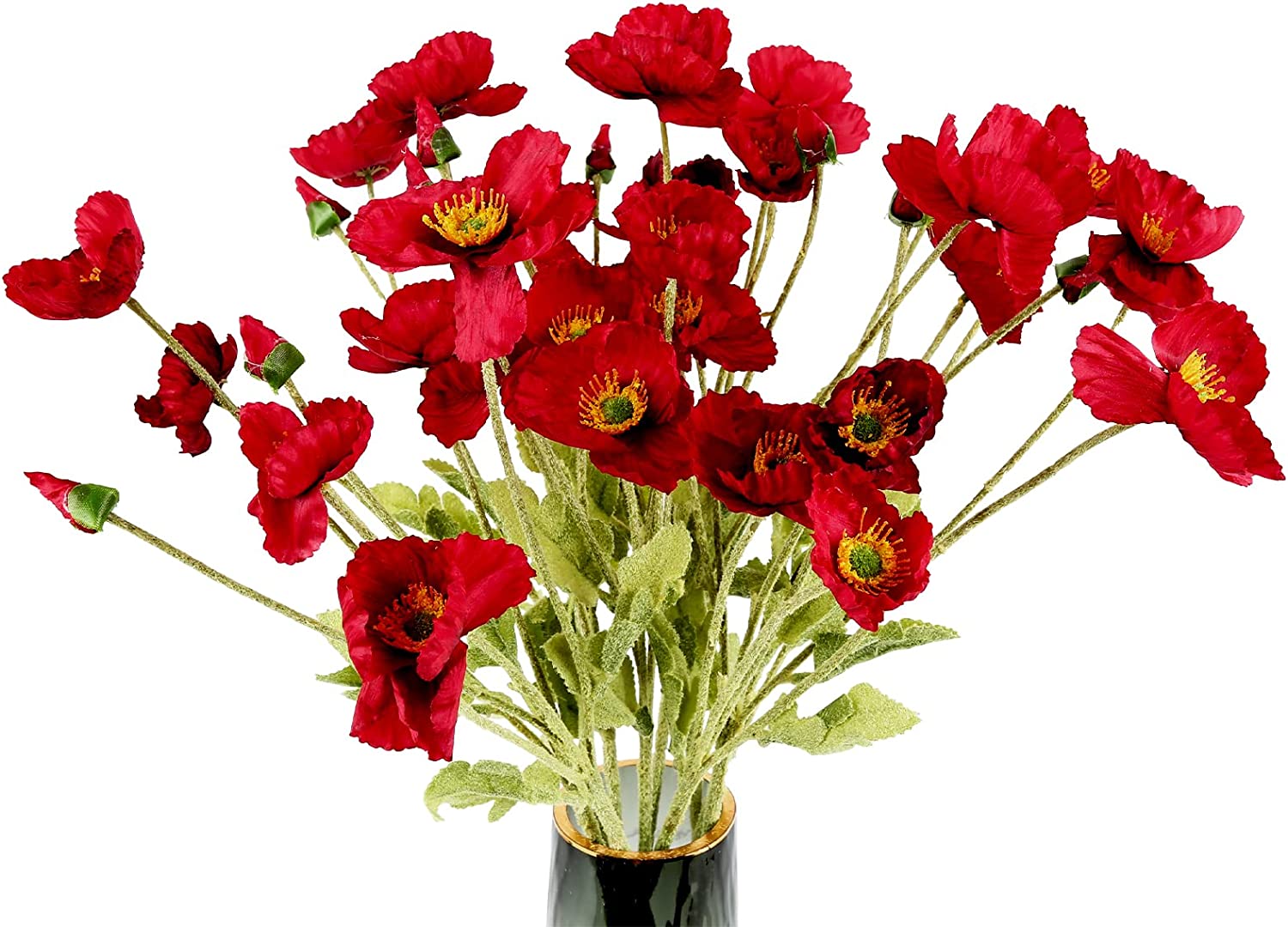
The red poppy has been used as a symbol of revenge in certain contexts, particularly in relation to war and conflict. Its vibrant red color and association with death have made it a powerful symbol of the desire to seek vengeance against those who have caused harm.
In World War I, the red poppy became a symbol of remembrance for those who had died in battle. However, it also became associated with the desire for revenge against the enemy, with soldiers and civilians alike viewing the poppy as a symbol of their determination to seek retribution for the lives lost.
The red poppy is also associated with the idea of revenge against those who have caused personal harm.
The bright red color represents the anger and desire for justice, while the delicate petals and fleeting nature of the flower symbolize the transience of life and the urgency of seeking revenge.
12. Poison

The act of poisoning is a covert and subtle way of getting back at someone, often causing harm without the victim even realizing what has happened until it’s too late.
Poison represents the idea of slow, painful destruction, much like the feelings of anger and resentment that can build up over time.
In literature, poison is often used as a tool for revenge. Characters use it to achieve their nefarious goals, such as Hamlet’s use of poison to kill his uncle or the witches’ brew in Macbeth which leads to the downfall of the main character.
Poison can also symbolize the idea of corruption and the erosion of morals, as those who use it are often willing to resort to any means necessary to achieve their desired outcome.
13. Black Cat

Often associated with witches and dark magic, the black cat represents the idea of manipulation and revenge through subtle means.
The black cat is also often used as a symbol of impending doom or misfortune. Edgar Allan Poe’s “The Black Cat” is a classic example of this, as the black cat serves as a harbinger of the main character’s downfall.
The cat is also used to represent the idea of guilt and the weight of one’s actions, as the main character is haunted by the cat after he commits a terrible act.
The black cat can also symbolize the idea of revenge itself. The cat’s sleek and stealthy movements represent the idea of a calculated revenge, one that is planned and executed with precision.
Its dark color represents the sinister and vengeful nature of those seeking revenge. The black cat serves as a powerful symbol of revenge in literature and culture, representing the idea of subtle manipulation and calculated vengeance.
14. Tarot Cards
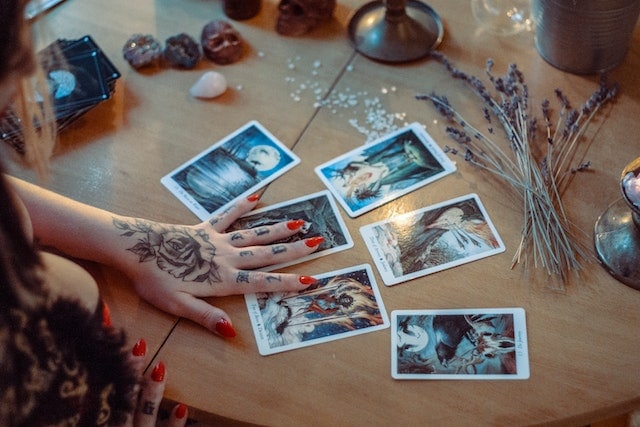
While not originally designed for this purpose, tarot cards have been used by some as a means of seeking revenge or predicting future retribution.
In tarot, the cards represent different archetypes and symbols that can be interpreted in various ways.
Those seeking revenge, may use tarot cards as a way to gain insight into their situation and plan their next move. The cards can also serve as a way of seeking guidance or validation for their actions.
The tarot card known as The Tower is often associated with revenge, as it represents the idea of sudden, unexpected upheaval and destruction. This can symbolize the act of seeking revenge, as the desire for vengeance can often lead to drastic and unforeseen consequences.
15. Coffin

The coffin is a powerful symbol of revenge, representing the finality and ultimate consequence of one’s actions. It symbolizes death and the end of a person’s life often used to represent the idea of seeking revenge until the bitter end.
In literature, the coffin is often used to symbolize the idea of vengeance and retribution. It can represent the idea of a final resting place for those who have been wronged, as well as the idea of closure for those seeking revenge.
The coffin can also represent the idea of karma, or the idea that one’s actions will ultimately come back to them in the end. Those seeking revenge may use the coffin as a symbol of this idea, seeking to bring about the ultimate consequence for those who have wronged them.
Wrapping Up
Symbols of revenge have been used in literature and culture for centuries to represent the desire for retribution and the consequences of one’s actions. These symbols can serve as a cautionary tale, warning against the destructive nature of revenge and the harm it can cause.
At the same time, they can also serve as a means of seeking closure and justice for those who have been wronged.
Ultimately, these symbols of revenge remind us that actions have consequences and that seeking revenge can often lead to unintended and unforeseen outcomes. It’s important to consider the impact of our actions and to seek justice in a way that is fair and just, rather than seeking revenge for its own sake.






